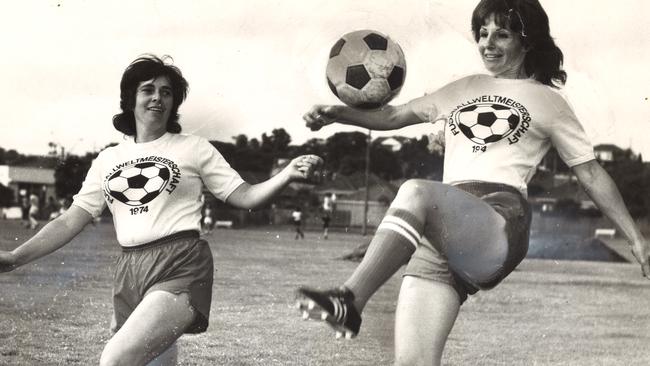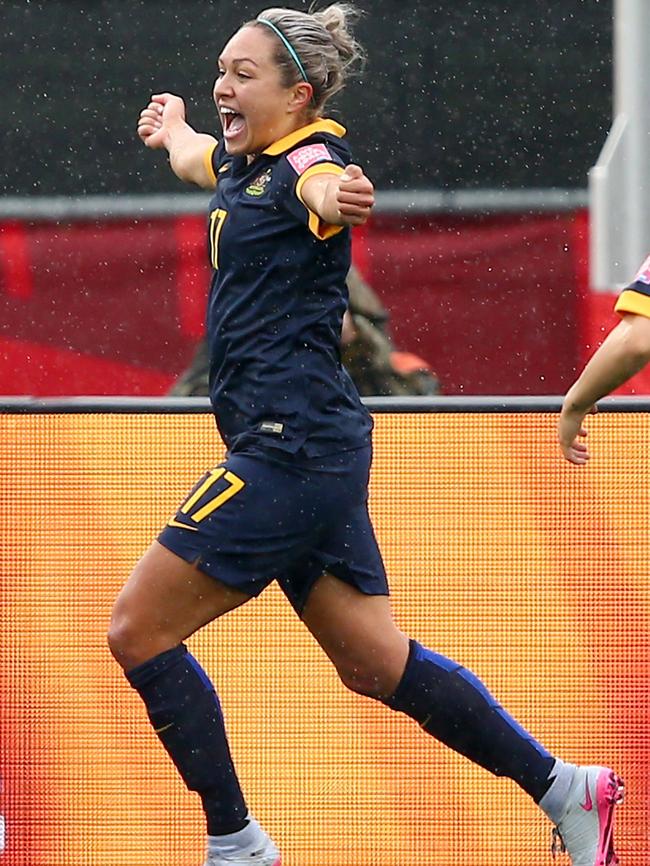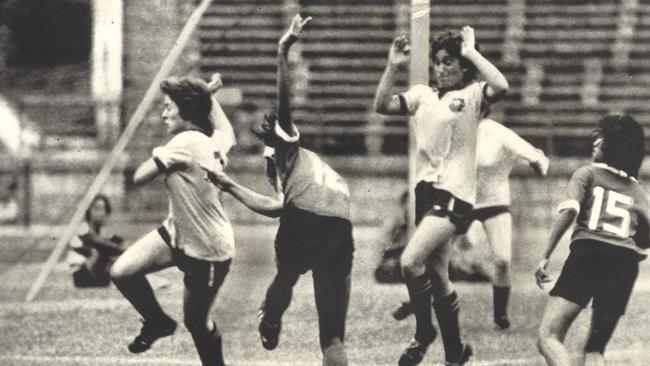Women quick to make their mark on the pitch
Our Matildas are making great inroads at the FIFA Women’s World Cup, thanks in large part to some intrepid football-playing pioneers.

Today in History
Don't miss out on the headlines from Today in History. Followed categories will be added to My News.
The Matildas have beaten Brazil to reach the FIFA Women’s World Cup quarter-finals in Canada and have the potential to to win the tournament.
Our team has come a long way since its formation in 1978. Indeed, women’s football has come a long way since soccer was first codified in 1863. At the time it was strictly a man’s game but there were soon women pulling on boots to boot around the pigskin.
There is evidence women have participated at various levels in ball games throughout history.
One of these is a Scottish Highland tradition of having single girls play a game, similar to soccer, at wedding celebrations. The idea was to allow the single men at the celebration to pick out a potential bride.
As the game evolved in the early 19th century to resemble the modern game, it was mostly played by men and schoolboys and was considered too rough and undignified for women.
One of the roughest aspects of the game was known as “hacking” where players were allowed to attack the shins of their opponents. This was outlawed when the rules of Association Football were first written down in 1863, the first of many moves to take the violence out of the game so that it could be enjoyed by more people.
There are accounts of women commonly playing the game as early as 1869, when American magazine Harper’s Bazar showed an illustration of women in full Victorian era skirts “playing ball” as part of a feature showing various women’s sports.

In 1881 there was a much publicised organised match between female players from Scotland and England. The Scots took the match 3-0. One newspaper report gives a condescending view of their skills: “The game, judged from a player’s point of view, was a failure, but some of the individual members of the team showed they had a fair idea of the game”.
They played a series of eight games, with Scotland winning at least four, England at least one, one match was drawn but for two of the games the score wasn’t recorded.
In 1895 British woman Nellie Hudson, going by the name Nettie J. Honeyball, formed the British Ladies’ Football Club, after putting an advertisement for interested women in the paper.
The successful applicants were split into a North and South team and played each other in several exhibition matches. Thousands came to watch, but for many it was the somewhat racy sight of women in knickerbockers that was the real drawcard.
One peculiar rule was that the women had to wear caps and that if a cap were pulled off during play, or knocked off by heading a ball, play had to stop until the cap was replaced. The series petered out after the first year because of mounting injuries and lack of funds.

By the time World War I broke out and sports promoters were looking for a way of keeping sporting contests going, there were plenty of women willing to pull on boots for a wartime competition.
Many of the teams were formed among women munitions workers. There were similar competitions in Australia with female footballers. Money was donated from gate takings to look after wounded soldiers.
After the war women were discouraged from playing. The British Football Association banned women’s teams from playing on their grounds in 1921 but the women formed their own league and sought their own venues. One of the most popular wartime teams that continued to attract crowds was Dick Kerr’s.
In Australia, women’s soccer games began in the early 1920s and serious competition began in 1926. It continued on with varying levels of public interest and support over the ensuing decades, growing stronger with an influx of football-loving migrants after World War II.
By the ’70s local women’s teams were playing visiting international teams, but not as part of an official Australian team. This growing level of interest and competition led to the formation of the Australian Women’s Soccer Association and a team of players was selected to take part in the 1975 Asian Cup.
In 1978 the Australian Women’s Soccer Team was officially formed, to take part in the first World Women’s Invitational Tournament, in Taipei, Taiwan. They became known as the Matildas.
A RIGHT ROYAL FAN
●The forerunner of the modern game of soccer or football was often for both sexes. There are many images of Ancient Greek, Roman and Chinese women playing kicking games with round balls.
● In some villages around Britain people often played games open to all.
● It is even said that Mary Queen of Scots (1542-87) was an ardent fan of football and wrote in her diary about games played at Carlisle Castle that involved other royals. One of the oldest surviving footballs was found hidden in Mary’s chamber in Stirling Castle.

Originally published as Women quick to make their mark on the pitch



